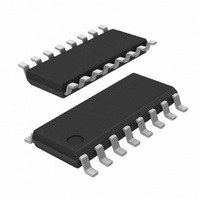SI3010-F-GS Silicon Laboratories Inc, SI3010-F-GS Datasheet - Page 29

SI3010-F-GS
Manufacturer Part Number
SI3010-F-GS
Description
IC ISOMODEM LINE-SIDE 16SOIC
Manufacturer
Silicon Laboratories Inc
Datasheet
1.SI3010-F-GS.pdf
(76 pages)
Specifications of SI3010-F-GS
Data Format
V.92
Interface
Serial
Voltage - Supply
3 V ~ 3.6 V
Mounting Type
Surface Mount
Package / Case
16-SOIC (3.9mm Width)
Lead Free Status / RoHS Status
Lead free / RoHS Compliant
Baud Rates
-
Lead Free Status / RoHS Status
Lead free / RoHS Compliant, Lead free / RoHS Compliant
5.5.1. Automatic Call Progress Detection
The Si2401 has the ability to detect dial, busy, and
ringback tones automatically. The following is a
description
implemented for these three tones.
5.5.2. Manual Call Progress Detection
Because other call progress tones beyond those
described above may exist, the Si2401 supports manual
call progress. This requires the host to read and write
the low-level DSP registers and may require real time
control by the host. Manual call progress may be
required for detection of application-specific ringback,
dial tone, and busy signals. The section on DSP low-
level control should be read before attempting manual
call progress detection.
Register Name
S1A
S1B
S16
S17
S18
S19
Dial Tone . The dial tone detector looks for a dial
tone after going off-hook and before dialing is
initiated. This can be bypassed by enabling blind
dialing (set S07[6] (BD) = 1
the Si2401 waits the number of seconds in S01
(DW) before searching for the dial tone.
In order for a dial tone to be detected, it must be
present for the length of time programmed in S1C
(DTT). Once the dial tone is detected, dialing
commences. If a dial tone is not detected within the
time programmed in S02 (CW), the Si2401 hangs up
and echoes an “n” to the user.
Busy/Ringback Tone . After dialing has completed,
the Si2401 monitors for Busy/Ringback and modem
answer tones. The busy and ringback tone detectors
both use the call progress energy detector. The
registers that set the cadence for busy and ringback
are listed in Table 15. Si2401 register settings for
global cadences for busy and ringback tones are
listed in Table 16.
Table 15. Busy and Ringback Cadence
BTON
BTOD
RTON
RTOD Ringback tone delta time
BTOF
RTOF
of
the
Ringback tone on time
Ringback tone off time
Busy tone delta time
Registers
Busy tone on time
Busy tone off time
algorithms
Function
b
). After going off-hook,
that
have
53.333
53.333
53.333
10 ms
10 ms
10 ms
Units
ms
ms
ms
been
Rev. 1.0
The call progress biquad filters can be programmed to
have a custom frequency response and detection level
(as described in "6. Low Level DSP Control" on page
31).
Four dedicated user-defined frequency detectors can
be programmed to search for individual tones. The four
detectors have center frequencies that can be set by
registers UDFD1–4 (see Table 18). SE5[6] [TDET]
[SE8 = 0x02] Read Only Definition can be monitored,
along with TONE, to detect energy at these user-
defined frequencies. The default trip-threshold for
UDFD1–4 is –43 dBm but can be modified with the DSP
register, UDFSL.
By issuing the “ATDT;” command, the modem goes off-
hook and returns to command mode. The user can then
put the DSP into call progress monitoring by first setting
SE8 = 0x02. Next, set SE5 (DSP2) = 0x00 so that no
tones are transmitted, and set SE6 (DSP3) to the
appropriate code, depending on which types of tones
are to be detected.
At this point, users may program their own algorithm to
monitor the detected tones. If the host wishes to dial, it
should do so by blind dialing, setting the dial timeout
S01 (DW)
“ATDT<Phone Number>;<CR>”
immediately causes the ISOmodem
return to command mode.
Once the host has detected an answer tone using
manual call progress, the host should immediately
execute the “ATDT” command in order to make a
connection. This causes the Si2401 to search for the
modem answer tone and begin the correct connect
sequence.
In manual call progress, the DSP can be programmed
to detect specific tones. The result of the detection is
reported in SE5 (SE8 = 0x2) as explained above. The
output is priority-encoded such that if multiple tones are
detected, the one with the highest priority whose
detection is also enabled is reported (see SE5 [SE8=02]
Read Only.)
In manual call progress, the DSP can be programmed
to generate specific tones (see SE5[2:0] (TONC)
(SE8 = 02)
SE5[2:0] (TONC) = 110
tone (as indicated by UFRQ in Table 18) with an
amplitude of TGNL.
Table 17 shows the mappings of Si2401 DTMF values,
keyboard equivalents, and the related dual tones.
to
Write
0
Only).
seconds,
b
generates the user-defined
For
and
®
command.
example,
chipset to dial and
Si2401
issuing
setting
This
an
29













